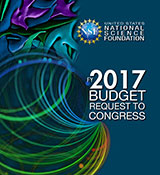- Home
- Agencies
- Department of Agriculture
- Department of Housing and Urban Development
- General Services Administration
- Department of Commerce
- Department of the Interior
- National Aeronautics and Space Administration
- Department of Defense
- Department of Justice
- National Science Foundation
- Department of Education
- Department of Labor
- Office of Personnel Management
- Department of Energy
- Department of State
- Small Business Administration
- Environmental Protection Agency
- Department of Transportation
- Social Security Administration
- Department of Health and Human Services
- Department of the Treasury
- U.S. Agency for International Development
- Department of Homeland Security
- Department of Veterans Affairs
- Goals
- Initiatives
- Programs
Primary tabs
Strategic Objective
Build an increasingly diverse, engaged, and high-performing workforce
Strategic Objective
Overview
NSF is only as capable as the people who make up the organization. Therefore, recruiting and retaining the best staff in all of our organization’s roles is of utmost importance. This strategic objective focuses on those aspects of recruitment, skill enhancement, leadership, and management of human capital that serve as the foundation for effective support of NSF’s people and mission. NSF recognizes the importance of building diversity in our staff, and ensuring that our staff stays current to match priority mission responsibilities. As an agency at the cutting edge of research and education, NSF also understands that the skills needed to carry out the agency’s work are constantly changing, and, as a result, on-going training is necessary for functions needed today and in the future. An excellent organization requires both vision and direction from our leadership, as well as a constant dialogue with the staff about potential change. It must be a dialogue in which all voices are heard and all contributions are valued. NSF looks to these dimensions of human capital management in order to share with all employees how they play a vital part in maximizing NSF’s performance.
Read Less...Progress Update
Program directors (PDs), including permanent and rotator staff, are the largest and highest-turnover segment of NSF’s workforce. The Strategic Review of this goal and objective considered the changes in the PD job duties and workforce over the last 15 years and examined factors impacting recruitment, selection, and retention of PDs. The Strategic Review utilized an array of qualitative and quantitative evidence to support the key findings and recommended actions summarized below.
1. What qualities does NSF seek in program directors?
Although each directorate seeks a slightly different combination of skills when recruiting program directors, most include skillsets that fall into three categories: 1) technical expertise, 2) management skills (the ability to get things done), and 3) a collaborative mindset. The team noted the increasing importance of non-technical skills in the timeframe considered.
2. How has the program director job changed over the past 15 years?
Recruitment and retention of program directors is correlated to the changes in the program director job duties over the past 15 years. These changes include increasingly large and complex workloads without proportional staffing changes (proposals up 65 percent, staffing up only 20 percent), use of increasingly complex electronic systems and communications, travel restrictions, salary and performance award constraints, multi-directorate solicitations, and reduced participation in the Independent Research Development (IR/D) program. In addition, the interrelationship between the delays in receiving appropriations, GPRA dwell time goals, time-consuming compliance checking, and end-of-year close-out pressures add to workload concerns.
3. What are the factors impacting recruitment, selection, and retention of a high-performing program director workforce?
Nineteen percent of NSF’s STEM workforce was eligible to retire at the end of FY 2014, with eligibility projected to grow to 32 percent by FY 2018. It is expected that a significant fraction of these people will choose to retire at the time of or prior to NSF’s move to Alexandria. In the 2014 FEVS results, the STEM workforce reported having unreasonable workload levels more often than any other NSF job family. The team identified a range of professional, personal, and environmental/logistical factors that affect recruitment and retention in both positive and negative ways. The time it takes to recruit program directors, particularly rotators, has increased significantly in recent years, making it particularly important to prioritize actions NSF can take to strengthen our ability to recruit and retain staff.
Opportunities for Action or Improvement
• Develop mechanisms to better manage individual workload and minimize disparities in workload.
• Implement exit and stay interviews as necessary to identify trends.








